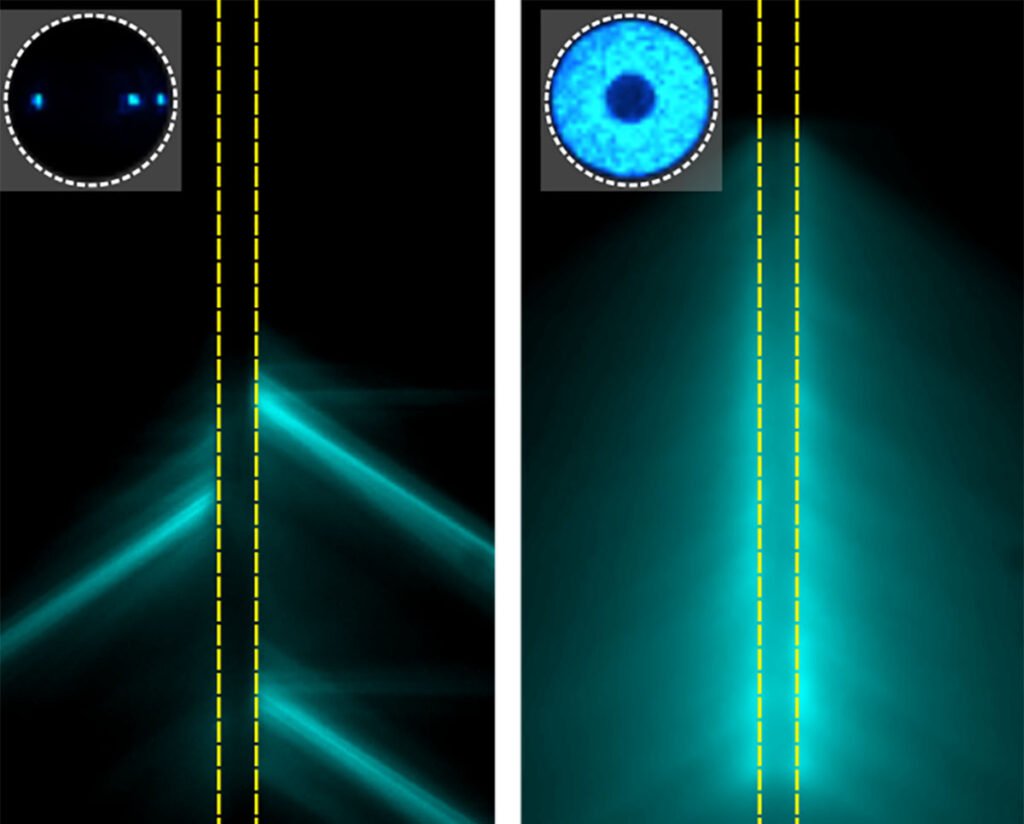A new fiber-optic technology developed at Washington University in St. Louis is poised to transform neuroscience by enabling multi-site, reconfigurable optical stimulation deep within the brain. The device, called PRIME (Panoramically Reconfigurable IlluMinativE) fiber, delivers light to thousands of neural targets through a single, hair-thin implant—offering a minimally invasive solution to a long-standing challenge in optogenetics.
Optogenetics uses light-sensitive ion channels to control neurons, allowing researchers to activate or silence specific cells. Traditional optical fibers, however, are limited to single-point delivery, making it impractical to study complex brain circuits that span multiple regions. To overcome this, the PRIME fiber integrates thousands of microscopic grating light emitters—each acting as a directional mirror—into a single strand using ultrafast-laser 3D microfabrication. These emitters can redirect light in multiple directions, functioning like a controllable disco ball inside the brain.
In proof-of-concept studies, the PRIME fiber was used to stimulate subregions of the superior colliculus—a brain area involved in sensorimotor transformation. By adjusting the light pattern, researchers could reliably induce either freezing or escape behaviors in animals, showing that spatially and temporally precise stimulation can shape complex responses. This level of control opens new possibilities for exploring how distributed neural circuits give rise to perception and action.
The device’s scalability and precision mark a fabrication breakthrough as well as a neurotechnology milestone. Each light emitter is roughly one-hundredth the width of a human hair, allowing dense packing without compromising tissue integrity. The fiber’s design also supports future expansion into bidirectional interfaces, combining stimulation with photometric recording to observe neural responses as they happen.
Article from WUSTL: Prime time for fiber optics to take a deep dive into brain circuits
Abstract in Nature Neuroscience: Laser-engineered PRIME fiber for panoramic reconfigurable control of neural activity

